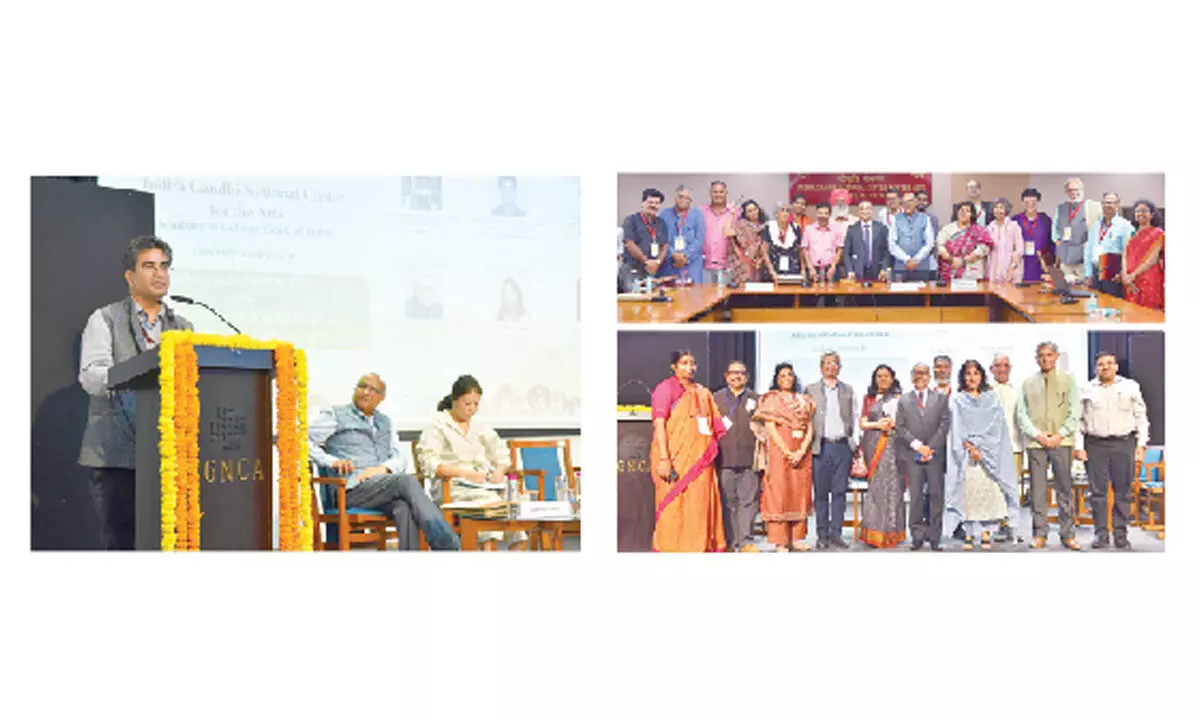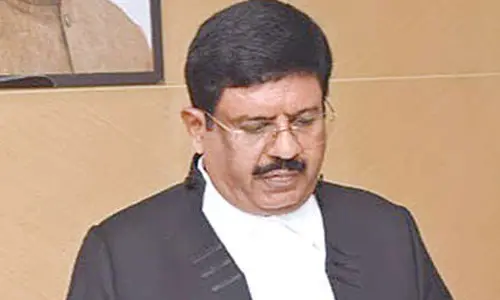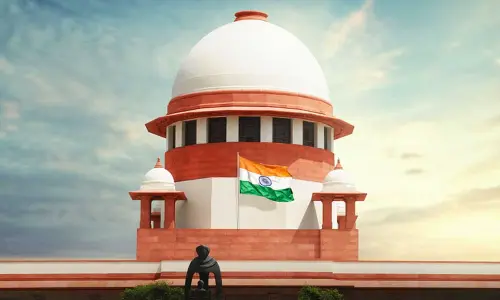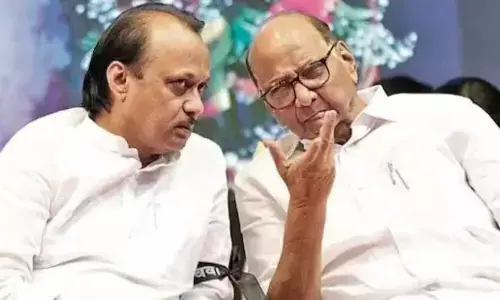Empowering communities for sustainable heritage conservation in Bharat

Bharat’s cultural heritage is a complex tapestry of history, architecture, and tradition. From ancient monuments to local folk practices, it is a legacy that demands careful preservation
Bharat’s cultural heritage is a complex tapestry of history, architecture, and tradition. From ancient monuments to local folk practices, it is a legacy that demands careful preservation. Yet, balancing heritage conservation with modern challenges—such as urban growth and climate impacts—is no small feat. At a recent symposium on Sustainable Heritage Conservation organized by the National Culture Fund and Indira Gandhi National Centre for Arts (IGNCA), Ministry of Culture, New Delhi the concept of Jan Bhagidari (people’s participation) emerged as a groundbreaking approach to preserving this heritage. The symposium highlighted how involving communities can lead to a sustainable model for heritage preservation, transforming conservation into a shared responsibility that fosters pride, economic opportunity, and empowerment for local communities.
The Jan Bhagidari Model: Community-Driven Conservation
The core message of the symposium was the need for community involvement in conservation efforts. Heritage conservation, it was argued, should not be the government’s sole responsibility. Local communities have an intrinsic understanding and appreciation of the value of heritage sites, making them essential partners. This Jan Bhagidari model positions heritage as a source of identity, pride, and economic growth for the communities that reside nearby. By involving people in conservation, heritage sites become more than historical relics; they become vibrant, living representations of cultural identity and economic potential.
This community-centered model aligns with global sustainable development goals, fostering inclusive economic growth, cultural preservation, and empowerment. With local input and pride at its heart, Jan Bhagidari can effectively drive a collaborative, community-oriented approach that strengthens both heritage and the communities that sustain it.
Empowering Communities Through Capacity Building
The symposium underscored that Jan Bhagidari offers tangible empowerment through capacity building and skills development. Community members can be trained in traditional crafts, heritage maintenance, and cultural tourism. This approach preserves cultural practices and offers new livelihood opportunities through community-based tourism. Self-help groups (SHGs) and artisans, recognized as key participants, can gain skills for heritage conservation while promoting traditional crafts. This training provides direct benefits by generating jobs, enhancing local pride, and positioning communities as active custodians of heritage.
Sustainable Tourism and Heritage Walks: Merging Culture and Economic Growth
The model also ties heritage conservation with sustainable tourism, presenting economic benefits through heritage walks, locally-led tours, and community-based tourism. Tourists engaged in authentic experiences contribute financially, generating funds for upkeep and promoting local pride. Government support in organizing heritage festivals, guided tours, and craft promotion was emphasized as a way to drive sustainable tourism. When communities see direct benefits from tourism and conservation efforts, they become motivated to protect heritage sites, fostering a mutually beneficial cycle between culture and economy.
Technology as a Conservation Tool
In today’s digital age, technology provides powerful tools for heritage conservation. Digital platforms can raise awareness, educate communities, and gather funds. Apps, websites, and virtual archives broaden access to heritage sites, allowing more people to experience and support these locations even from afar. Additionally, technology assists in documentation and preservation by creating digital records of heritage stories, practices, and sites. This documentation is invaluable for future generations. Moreover, digital tools facilitate training and knowledge sharing, empowering communities with resources to maintain their heritage sustainably.
Policy for Unprotected Heritage Sites
Beyond UNESCO World Heritage Sites, Bharat has countless unprotected heritage sites with immense cultural significance. However, these sites often lack legal protections and face risks from development and neglect. The symposium recommended a policy framework for unprotected sites to ensure their preservation. This framework could include incentives for community involvement, public-private partnerships, and local governance in managing sites. Such policies ensure that these culturally important locations remain part of the community’s identity, safeguarded for future generations.
Sustainable and Responsible Tourism
Heritage sites attract responsible tourists, providing a source of revenue that can support conservation. However, this requires careful management to avoid the adverse impacts of mass tourism. Sustainable tourism guidelines were suggested to respect cultural and environmental limits, with a focus on responsible travel practices that boost local economies without harming heritage sites. The symposium emphasized inter-generational knowledge sharing and preserving traditional customs, ensuring tourism supports economic resilience and social justice within local communities.
Celebrating Community Achievements
For Jan Bhagidari to thrive, community contributions to heritage preservation should be celebrated and recognized. Awards, public acknowledgment, and incentives for local achievements can motivate communities to engage actively in preservation efforts. Recognizing these efforts builds a national sense of pride and participation, encouraging other communities to adopt similar initiatives. This recognition also helps create inspiring examples, fostering a culture where heritage conservation is seen as both a public duty and a source of honor.
Building a Future of Sustainable Conservation
The Jan Bhagidari model, as envisioned by the symposium, represents a sustainable, community-led approach to heritage conservation in Bharat. By adopting this principle, the country can shift heritage preservation from a government-led responsibility to a shared mission with the community at its core. Empowering local communities, integrating technology, developing inclusive policies, and promoting sustainable tourism collectively contribute to a model that values both cultural heritage and sustainable development.
The way forward requires long-term commitment from the government, private sector, and communities alike. As Bharat embarks on this journey, Jan Bhagidari can inspire a new era where every individual is a custodian of culture, and every community a beacon of heritage preservation. Through collective effort, India’s heritage can continue to be a source of pride, knowledge, and inspiration for generations.



















